2015 by the Board of Trustees
of the University of Illinois
All rights reserved
Manufactured in the United States of America
C 5 4 3 2 1

This book is printed on acid-free paper.
Library of Congress Cataloging-in-Publication Data
Mirola, William A. (William Andrew)
Redeeming time : Protestantism and Chicagos eight-hour
movement, 18661912 / William A. Mirola.
pages cm (Working class in American history)
Includes bibliographical references and index.
ISBN 978-0-252-03883-9 (hardback)
ISBN 978-0-252-09679-2 (e-book)
1. Eight-hour movementIllinoisChicagoHistory. 2. Hours of laborIllinoisChicagoHistory. 3. Labor movementIllinoisChicagoHistory. 4. Labor movementReligious aspectsChristianity. 5. Protestant work ethicIllinoisChicagoHistory. 6. ProtestantismIllinoisChicago. I. Title.
HD5126.C45M57 2015
331.25'7097731109034dc23 2014019855
PREFACE
In the wake of almost two decades of offshoring, economic contractions following 9/11 and the global economic recession, and antiunion political campaigns waged in many states across the country, the American labor movement has been losing rather than gaining ground. According to the Bureau of Labor Statistics, in 2012 union membership figures dropped to 14.4 million, a meager 11.3 percent of all wage and salary workers in the labor force. This figure represents a high of 36 percent of public-sector workers but only 6.6 percent of workers in the private sector. Beginning in 1995, under the leadership of John Sweeney, the American Federation of LaborCongress of Industrial Organizations (AFL-CIO) focused its attention on ways to stem this slow bleeding of members and union power. Many union leaders committed energy, personnel, and money to revitalize a lethargic labor movement by organizing more workers and winning contracts, especially among service-sector employees. An equally significant part of the labor movements revitalizing strategy since then has been a focused effort to build bridges with religious groups of all faiths to strengthen its own moral legitimacy in local communities and to help reduce the heightened alienation many Americans profess toward organized labor.
Although people both inside and outside of the labor movement may wonder about the strategic relevance of attempting to build alliances with religious organizations, such alliances have been significant at many key moments in American labor history. Congregations and clergy across the denominational spectrum brought much-needed spiritual and material resources to the embattled labor movement. The religious community, in the past as well as now, was seen as a collective entity that could help restore a moral framework for union activities generally. Since most religious groups maintain commitments to furthering social justice causes and fighting for the downtrodden in society, enlisting those commitments for economic justice struggles remains a logical strategic move on labors part. In addition to building on shared beliefs in social justice, sympathetic people of faith have been important to workers engaged in strikes or lockouts. By offering food, clothing, financial assistance, and other resources to needy workers, the religious community provided instrumental as well as moral support to labor many times in the past. They continue to do so today.
Fortuitously, in 1996, a national organization, the National Interfaith Committee for Worker Justice (NICWJ), emerged on the heels of John Sweeneys election as AFL-CIO president. Established in Chicago by activist Kim Bobo and others, the National Interfaith Committee has been at the forefront of efforts on the part of concerned members of the religious community to engage with the labor movement. Since its founding, the NICWJ has become an umbrella organization with many chapters in cities across the country. Through its chapters, the NICWJ supported national campaigns to improve conditions for poultry workers and farmworkers, among others. Promoting living-wage campaigns has also been a central battleground for NICWJ-affiliated organizations. More recently, the NICWJ has been organizing in opposition to antiunion and right-to-work legislation in states such as Wisconsin and Indiana. On an educational front, the NICWJ continues to encourage congregations to participate in their Labor-in-the-Pulpit program in which representatives of organized labor are invited to speak at church services or in synagogues the weekend of Labor Day.
What is interesting about both the labor movements campaign to attract the interest of the religious community and religious activists desire to assist the labor movement is that both groups seem to see what they are doing as something new and charting new waters. While both groups point to their respective histories to support their efforts, in doing so they highlight the success stories of these alliances. Few among them know enough about the specific histories of church-labor relations in concrete struggles to understand the complexities of how and why they have emerged in the past but then seemed to fade again. Little critical analysis has been done on these past relationships to make sense of both the possibilities that exist for alliance success as well as the constraints that limit them today.
Both labor and religious activists bring a stirring idealism to contemporary labor conflicts. But questions remain: Is this simply wishful thinking on the part of each group about what religious support might mean for labors struggles generally? Or does this idealism spring from witnessing the experience of real-life religious leaders and laypeople in communities playing pivotal roles in the successful outcomes of local labor conflicts? Perhaps it is both. In any case, the relationship between religion and the labor movement is complex. Since the 1990s, in strikes and lockouts across the country, individual clergy and other people of faith have stood with workers in their time of need, and these alliances have been central to the success of numerous campaigns. To be sure, these alliances helped develop mutual admiration between labor and supporters from within the religious community. However, frustration has also accompanied hope in these alliances. In talking to striking workers, one hears expectations that clergy will be conduits for labor education in their congregations and denominations. Some union members assume support for the physical or emotional well-being of individual striking or locked-out workers means religious activists will support the principle of unionism, strike tactics, and the working-class language of combat. Workers are frustrated to find that the willingness of clergy to sign petitions protesting employers actions is not synonymous with a willingness to join other instrumental tactics in a unions strategy.
Religious activists too are offended when union members discuss their contributions as if they were pawns on a giant chessboard where labor strategists plot moves against their corporate counterparts. Others are uncomfortable with aspects of picket-line dynamics such as the use of profanity, racial or homophobic epithets, and the tenor of violence when striking workers confront the scabs or hired security guards driving past them to get to work. Union activists ask themselves why religious supporters dont act like striking workers, and religious supporters ask themselves why workers dont act more like middle-class churchgoers.

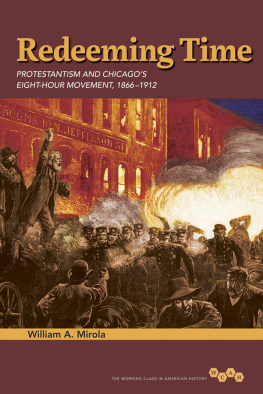
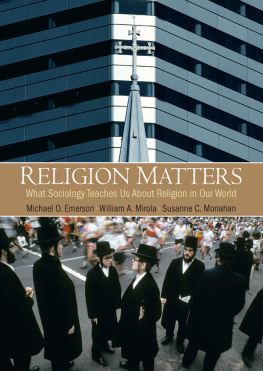

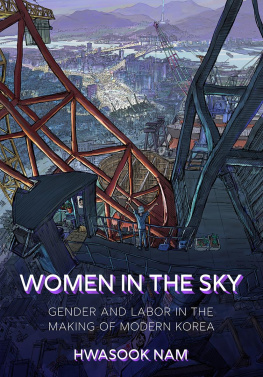
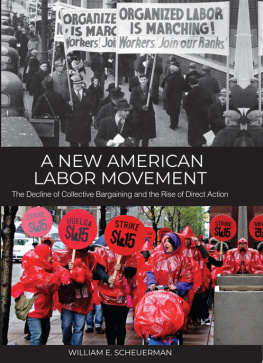
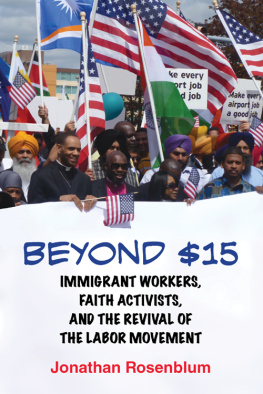
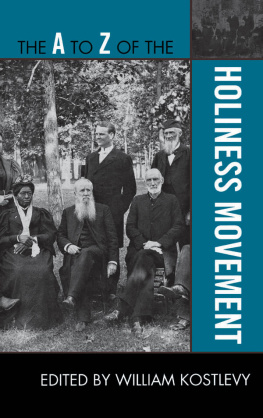

 This book is printed on acid-free paper.
This book is printed on acid-free paper.